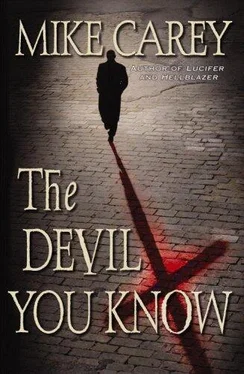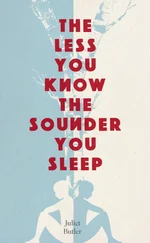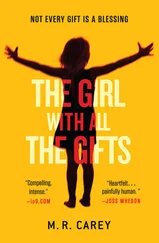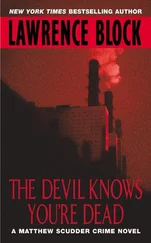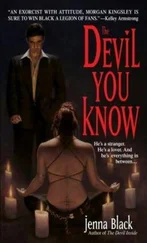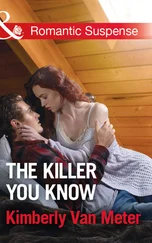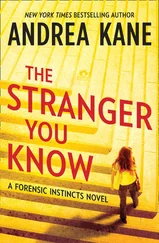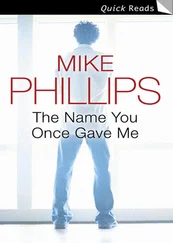Actually, the system worked surprisingly well, at least to begin with. I knew I was being set up for a fall, but I took it for what it was worth. The planning department had partly gone over to computerized records. There were half a dozen terminals set up in the foyer where you could just sit down, type in an address, and get a planning history. Thinking about Cheryl, I spared a brief moment of pity for whoever was sitting in the bowels of the building, retroconverting.
“You won’t get everything,” I was told by an arrogant, acned young clerk who looked less like a Doctor Who villain and more like the kid in a teen gross-out comedy who doesn’t get the girl but does lose his trousers at the graduation ceremony. “There’ll only be an entry where there’ve been changes to the building since the late 1940s—that’s when the planning-application system came in. If you don’t know your dates, you could be here for a long time.”
But I wasn’t choosy, and it turned out that there were a whole fistful of documents on file for 3 Churchway, Somers Town, one of them going all the way back to 1949. That one was an application to repair bomb damage to the roof, frontage, and right exterior wall. Back then, the building was listed as belonging to the war office, but by the mid-1950s, when an application was put in to extend it to the rear, it had become an “annex to the British Library.” Then nothing until 1983, when there was a further extension and a change-of-use certificate; now number 23 was going to come under local authority control and house an unemployment claims office and a job center. Well, that was the Thatcher era—unemployment was a growth industry. One final application, from 1991, was for interior works. I suppose that was when they put in all the bare, brutalist staircases, the fake walls, and the dead ends. Nothing on file for the work that was going on now, but maybe current work was filed elsewhere.
That was as far as I could get online. Now I had to fill in some request slips and hand them in at a small counter in the main planning office. This was a large room on the second floor, cut in two by a long Formica counter, and it was as busy as a cattle auction. Most of the people there were men in overalls who were looking to get official stamps on hastily scrawled documents, but there was also a leavening of clerks from other parts of the building filing forms or retrieving forms or maybe just exchanging pheromones like worker ants.
I waited for almost an hour and a half before a stern, middle-age lady with a face out of a Far Side cartoon came back with a package for me. It was a set of photocopies of the oldest plans they had for 23 Churchway—the ones that had been filed back in 1949—and the newest ones from the 1990s. I figured that with those fixed points to work from, I could fill in the gaps.
So far so good. I genuflected to the dark gods and got out of there fast. My next stop was the British Newspaper Library, out in Colindale. A Thameslink train from King’s Cross took me to Mill Hill, and on the way out there, I took a look at the building plans. As I’d expected, the ones from 1991 had all the new staircases and corridors and fire doors marked in and were so small and so complicated, they looked like a maze in a kids’ puzzle book: help Uncle Felix get from the office to the haunted strong room—but look out for that nasty Mr. Peele. By contrast, the 1949 plans were austere and simple and clear, and showed fewer than half as many rooms. The place had grown and mutated to the point where the original architect would probably need the plans just to find the street door.
I didn’t know the building well enough yet to pinpoint the room where the Russian stuff was being kept, but the first floor as a whole seemed to have been made over according to a crude but workable plan. Each of the original rooms had been split down the middle, so every second wall was a new plasterboard partition. The original doors, too wide for the new, smaller rooms, had been bricked in, and new, narrower doorways had been put through. A secondary staircase that showed on the original plans had been torn down, the space cannibalized to make small cubicles that were probably toilets or store cupboards. At the same time, the cramped stairways that I’d seen in situ had been created, wedged into the new ground plan wherever there was a gap too narrow to become an actual room. The overall effect was really depressing—it was like reading the tactical projections for the rape of a corpse.
From Mill Hill overground, I walked the rest of the way—but then I overshot and found myself walking past the grounds of the Metropolitan Police Training Academy, which were filled with primary-school kids learning how to ride bikes. A young woman was looking wistfully through the chain-link fence at all the children zooming and zigzagging through a maze sketched out in orange plastic bollards. She turned to look at me; there was an unhealthy bloom to her skin, and I caught the faint sweet-sour whiff of decay wafting off her. She was one of the returned. Her mud-stained jeans and sweatshirt and the occasional strand of dry grass in her hair gave a fairly clear indication of where she’d slept last night.
“I’m still waiting,” she said.
I should have just walked on by, but her face had that Ancient Mariner quality. I was the one in three.
“Waiting for what?” I asked her.
“For the children. I said I’d be here when they got back.” A spasm passed across her slack face—annoyance, or unease, or maybe something purely physiological. “Mark said something about a car. There was a car. They didn’t get the number.” A leaden pause. “I told them I’d wait here.”
With the sound of happy shouts and laughter ringing in my ears, I trudged on my way. I looked back once. She was staring through the fence again, her arms hanging at her sides, her face a solemn mask, trying to read the runes of a life that wasn’t hers anymore.
Two minutes later, I entered the cathedral-like silence of the Newspaper Library, which smells like a worldful of armpits and is illuminated by five-watt strip lights guaranteed not to damage old newsprint by allowing it to be read.
I was probably wasting my time here, but I needed to rule out the obvious before I started looking for more esoteric answers. If the Bonnington Archive was built on an old Indian burying ground, or if someone had slaughtered the entire staff in an obscene necromantic ritual back in the 1960s, when that stuff counted as hip, I’d feel pretty damn stupid to have missed it.
You can get most of this material from other, more salubrious places now, but the Colindale Library has still got the fullest index of anywhere I know and a stack of old papers on microfiche that goes way back into the mists of antiquity—probably to headlines like ONE IN THE EYE FOR HAROLD.
But Churchway, Somers Town, hadn’t made the headlines once in all those many years. It seemed to be a place where nothing much had ever happened. No penny dreadfuls. No Victorian melodramas. No threads to follow, which only helped insofar as it offered no more blind alleys for me to walk down—and threw me back on my own resources. That was okay. I still had some.
When I came back out onto the sunlit street, blinking in a brightness that seemed somehow unreal after that half-lit world, the risen woman I’d met on my way in was loitering on the well-tended patch of lawn just outside the library’s side door. Her eyes were closed, and her lips were working silently.
I had to pass her, but I gave her a wide berth this time; I didn’t want to get sucked into her private world of unresolved crises and suspended time. I got about ten yards farther down the street.
“Felix.” The hairs on the back of my neck prickled. I spun round. Nothing in the zombie’s expression or posture had changed. It might not even have been her voice; one congealed mumble sounds much like another.
Читать дальше
